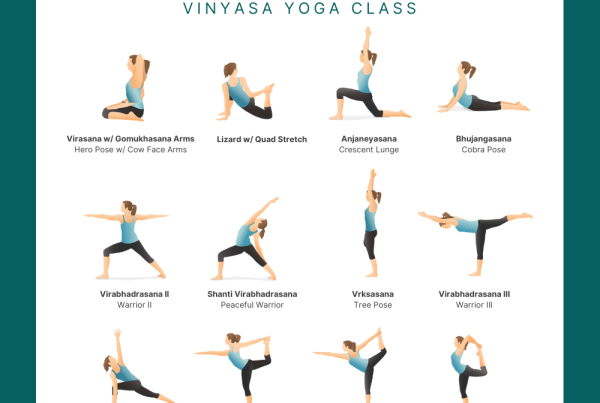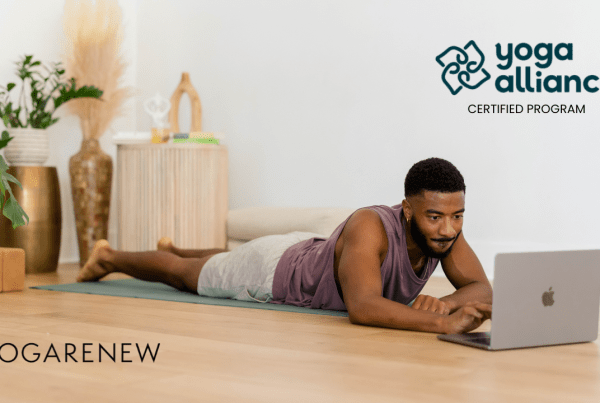
Yin yoga is the practice of pure and complete stillness. In a yin class, poses are typically held twice or even three times as long as in a vinyasa yoga class. The idea is that when held, these poses help us stretch the connective tissues, or fascia, of the body. This is a great method for enhanced mobility and flexibility with both the joints and muscles!
In this week’s Weekly Class Theme, we’ve compiled a few popular yin yoga poses for relaxation and stress relief. They can be practiced as a sequence in a yin yoga class, or separately as needed. These poses not only target the fascia, but they allow for the mind to quiet and still, finding peace, solitude and relaxation — no matter where you are.
6 Yin Yoga Poses for Relaxation & Stress Relief
1. Sukhasana Side Stretches (Easy Seated Pose with Lateral Stretch)
Begin in a comfortable cross-legged position. Rest your hands on your knees, sit tall, and take a few deep breaths.
When you’re ready, place your right hand on the floor beside you and sweep your left arm overhead, gently leaning to the right. Feel the length along your left side body, from hip to fingertips. Breathe deeply, letting your rib cage expand and soften. Stay for 1–2 minutes, then switch sides.
Benefits: Side stretches open the intercostal muscles between your ribs, helping you breathe more deeply and releasing tension stored around the chest and shoulders.
2. Child’s Pose (Balasana)
From your seated position, shift onto your hands and knees, then bring your big toes to touch and your knees wide. Sink your hips back toward your heels and rest your forehead on the mat or a cushion.
Extend your arms forward or place them by your sides—whichever feels more restful. Stay here for 3–5 minutes, breathing slowly and fully.
Benefits: Child’s Pose calms the nervous system, eases lower back tension, and provides a sense of safety and grounding—perfect for melting away stress.
3. Puppy Pose (Uttana Shishosana)
From all fours, walk your hands forward while keeping your hips stacked above your knees. Lower your chest and forehead toward the mat, allowing your heart to melt down.
Hold for 2–3 minutes, breathing deeply into your chest and shoulders.
Benefits: Puppy Pose gently opens the heart and shoulders, areas that tend to tighten during stressful times. It’s also deeply soothing for the upper spine.
4. Seated Spinal Twist (Ardha Matsyendrasana)
Sit tall with both legs extended in front of you. Bend your right knee and cross your right foot over your left thigh. Place your right hand behind you for support and your left elbow on the outside of your right knee.
As you inhale, lengthen your spine; as you exhale, gently twist to the right. Hold for 1–2 minutes per side.
Benefits: Twists detoxify the body by stimulating the digestive organs and spine, helping release stored emotional tension and energy blockages.
5. Caterpillar Pose (Seated Forward Fold)
Sit with your legs extended in front of you. As you exhale, slowly fold forward, rounding your spine and letting your head and arms relax. Use a bolster or pillow under your chest if needed.
Stay for 3–5 minutes, allowing gravity to gently deepen the stretch.
Benefits: Forward folds are naturally calming. They activate the parasympathetic nervous system—your body’s “rest and digest” mode—helping to ease anxiety and quiet the mind.
6. Legs Up the Wall (Viparita Karani)
End your practice with this ultimate relaxation pose. Lie on your back near a wall and extend your legs up, letting your arms rest by your sides. Close your eyes and breathe deeply for 5–10 minutes.
Benefits: This gentle inversion promotes circulation, relieves tired legs, and supports your body’s natural relaxation response. It’s a simple yet powerful way to release tension and restore balance.







